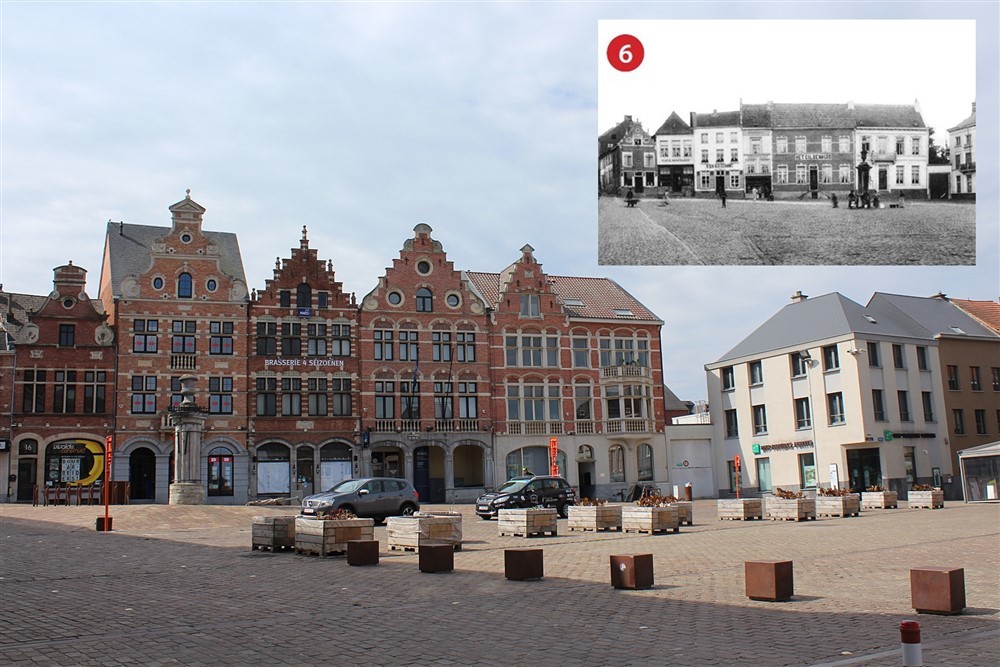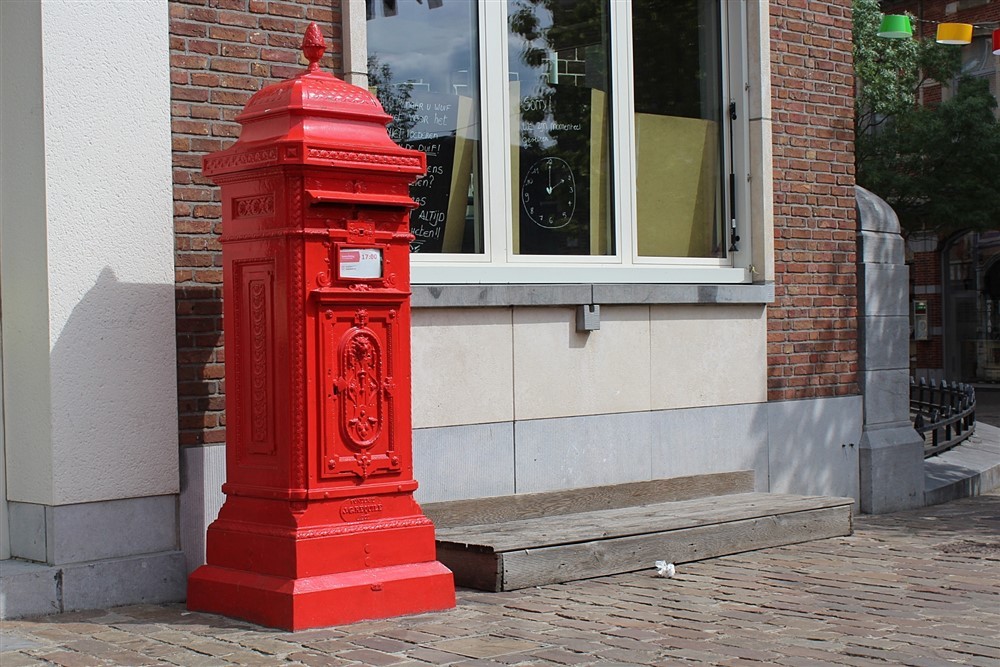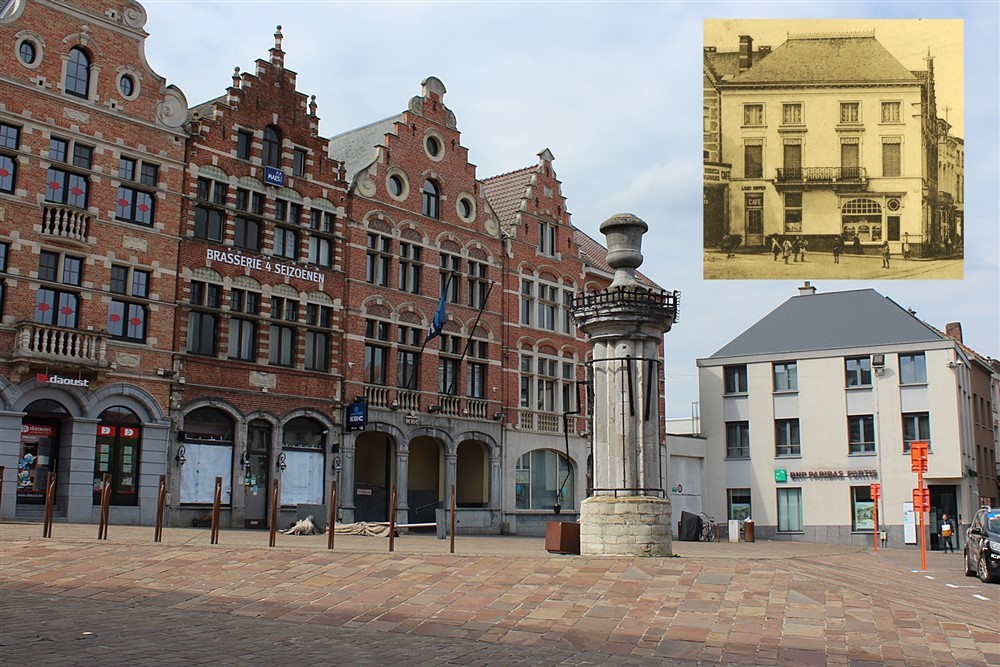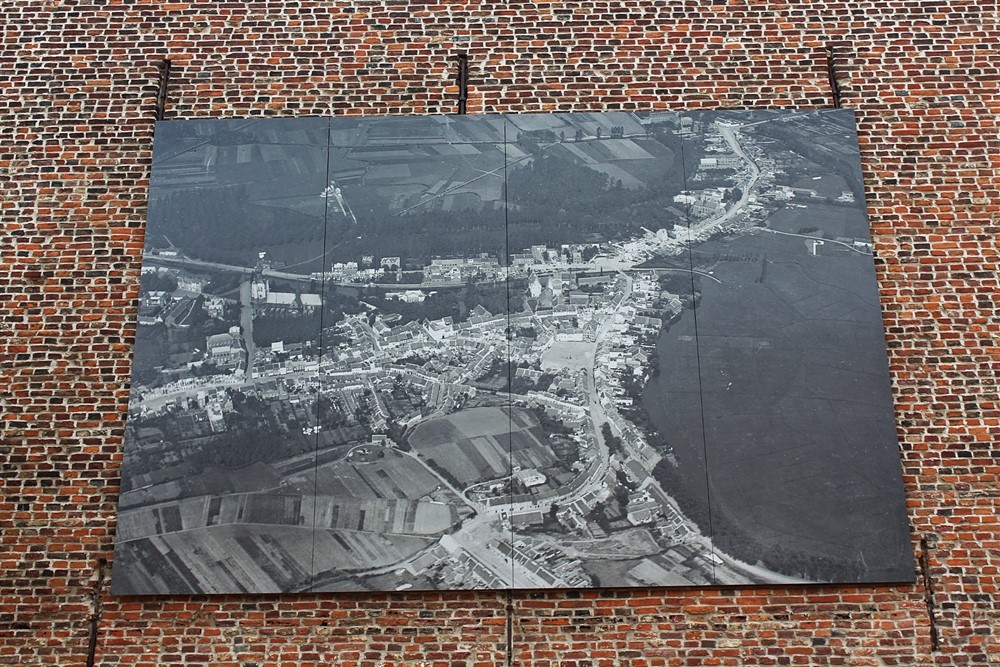Grote Markt Aarschot
The facts
On Wednesday August 19, 1914, after heavy resistance from the Belgian army, the German troops occupied the city of Aarschot. That same day, Aarschot would become the first Flemish martyr city.
As soon as the German soldiers entered that morning, the people of Aarhus were terrorized. At that time large groups of inhabitants had gathered on the Grote Markt and on the Lei and the cries of "All sollen fusilliert were" and "Durch den Kopf schießen" left nothing to the imagination. The prisoners were only released by Mayor Tielemans. Around 11 o'clock three men from the Amerstraat were shot almost in front of their wives and children. That morning, 39 civilians were killed. Demolitions were inflicted on countless houses. Shops were looted. Horses and bicycles were claimed. The city treasury was broken open. Wine, liqueur and cigars were stolen from the citizens.
In the afternoon peace seems to return and around 3 o'clock in the afternoon the general staff arrives. Commander Stenger and some officers move into the house of Mayor Tielemans. But at 6 o'clock in the evening a general panic breaks out among the German soldiers. Shots are fired in all directions. Stenger watches from the balcony what is going on.
Afterwards Frans Tuerlinckx will testify: "Wednesday, at 6 o'clock in the evening gunshots were fired again. […] From the mayor's balcony, three officers were watching the scene. First they withdrew a little in the door hole of the balcony, and then suddenly the door slammed violently. I think that a senior officer was killed or wounded at the time. "Major General Stenger was shot in the face and chest and is dead in the house of Mayor Tielemans.
In the following long hours, a German fury rages through the streets. Some prisoners from Rillaar are the first victims. They are shot at the Lei. Rhythm master Karge lets the residents of the neighborhood float together on the Grote Markt. Men, women and children are taken from their homes and driven between a hedge of swearing soldiers, the rifle at the ready. In the market, the men are separated from their families. That evening the houses in Kortstraat (today Jozef Tielemansstraat) and Theo De Beckerstraat go up in flames. The southern side of the market is one big fire.
Around 7 p.m., German gendarmes lead a first group of some 80 prisoners away with raised hands. They will not see their wife and children again… Later that same evening a second group with Mayor Tielemans will be taken outside the city and executed the next day. More than 170 civilians were brutally murdered those days.
Remembrance signs on the Grote Markt
Those who are not from Aarschot and walk on the Grote Markt are probably ignorant of the intense suffering of August 19th. In addition to the war memorial, however, there are numerous signs that remind us of this. There is the restored house of Mayor Tielemans and where the iconic balcony was removed to the great dismay of the people of Aarhus. We see the red letterbox, which, although of little use today, was spared because it appeals to the proposition that from here the shot on Major General Stenger would have been fired by his own people. An aerial photograph from 1919 was hung high on the wall of the passage to the Demerparking, too far away to see the details of the destruction. Several 'attention stones' were placed on the ground, showing us the Grote Markt before the destruction and after the reconstruction.
Do you have more information about this location? Inform us!
Source
- Text: Jan Rymenams
- Photos: Jan Rymenams
Nearby
Museum
- Stedelijk Museum, Room "War and destruction" Aarschot - Aarschot
- Allied Forces Museum Herselt - Herselt
- House of the Franco-Belgian Resistance - Tielt-Winge
Point of interest
Monument
- War Memorial Aarschot - Aarschot
- Jeweler Verhaeghen House Aarschot - Aarschot
- Memorial Lucien Meyer Aarschot - Aarschot
Cemetery
- Belgian War Graves Aarschot - Aarschot
- Belgian Graves Veterans Aarschot - Aarschot
- Commonwealth War Graves Langdorp - Langdorp (Aarschot)







